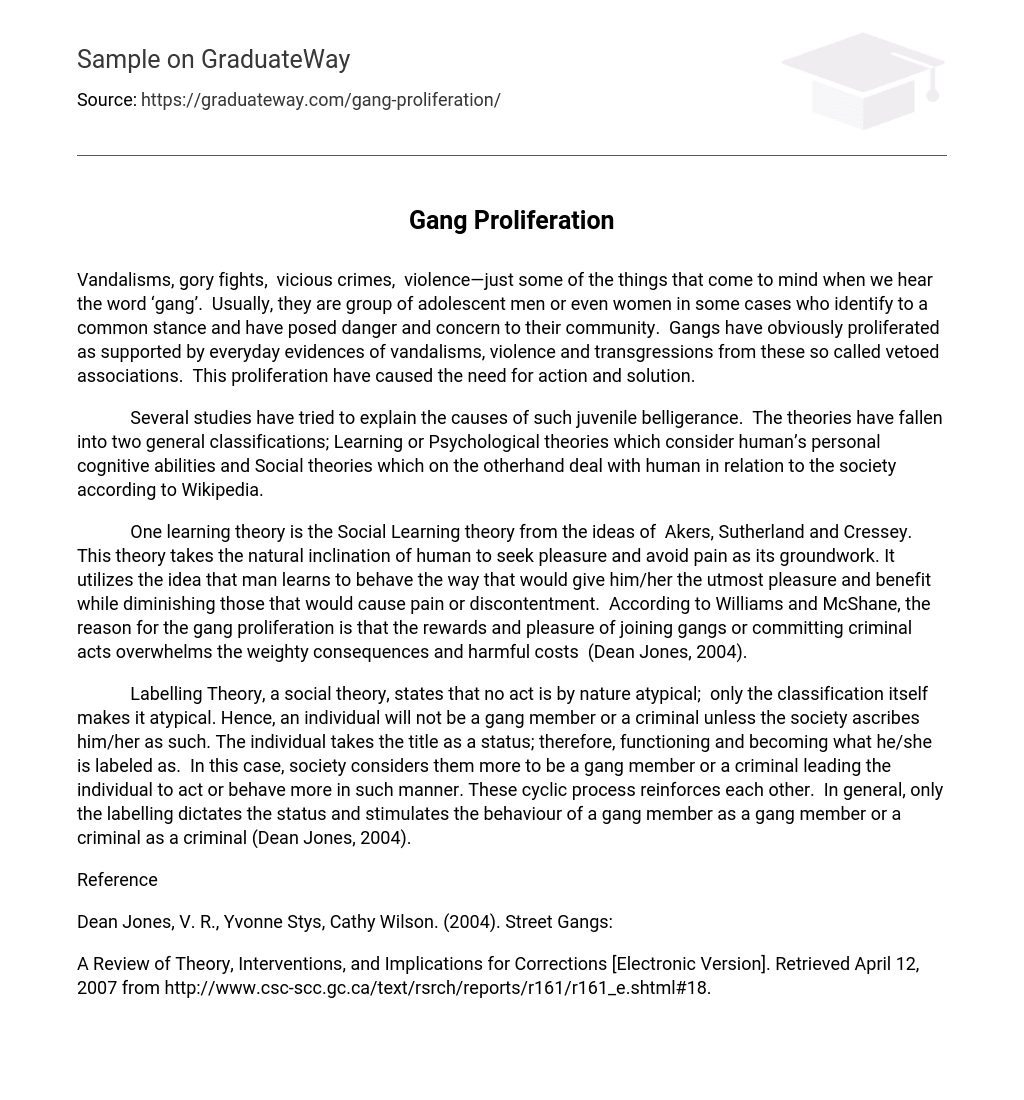Vandalisms, gory fights, vicious crimes, violence—just some of the things that come to mind when we hear the word ‘gang’. Usually, they are group of adolescent men or even women in some cases who identify to a common stance and have posed danger and concern to their community. Gangs have obviously proliferated as supported by everyday evidences of vandalisms, violence and transgressions from these so called vetoed associations. This proliferation have caused the need for action and solution.
Several studies have tried to explain the causes of such juvenile belligerance. The theories have fallen into two general classifications; Learning or Psychological theories which consider human’s personal cognitive abilities and Social theories which on the otherhand deal with human in relation to the society according to Wikipedia.
One learning theory is the Social Learning theory from the ideas of Akers, Sutherland and Cressey. This theory takes the natural inclination of human to seek pleasure and avoid pain as its groundwork. It utilizes the idea that man learns to behave the way that would give him/her the utmost pleasure and benefit while diminishing those that would cause pain or discontentment. According to Williams and McShane, the reason for the gang proliferation is that the rewards and pleasure of joining gangs or committing criminal acts overwhelms the weighty consequences and harmful costs (Dean Jones, 2004).
Labelling Theory, a social theory, states that no act is by nature atypical; only the classification itself makes it atypical. Hence, an individual will not be a gang member or a criminal unless the society ascribes him/her as such. The individual takes the title as a status; therefore, functioning and becoming what he/she is labeled as. In this case, society considers them more to be a gang member or a criminal leading the individual to act or behave more in such manner. These cyclic process reinforces each other. In general, only the labelling dictates the status and stimulates the behaviour of a gang member as a gang member or a criminal as a criminal (Dean Jones, 2004).
Reference
Dean Jones, V. R., Yvonne Stys, Cathy Wilson. (2004). Street Gangs:
A Review of Theory, Interventions, and Implications for Corrections [Electronic Version]. Retrieved April 12, 2007 from http://www.csc-scc.gc.ca/text/rsrch/reports/r161/r161_e.shtml#18.





